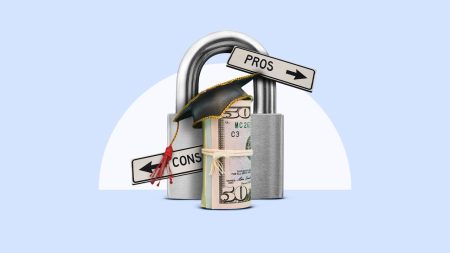If your newer car is totaled in an accident, gap insurance can help cover the difference between what you owe on your loan and what your insurance pays out — potentially saving you thousands out of pocket. This type of coverage is especially relevant today, as rising vehicle prices, high interest rates and ongoing inflation have widened the gap between vehicle values and loan balances.
What is gap insurance?
Guaranteed asset protection coverage, commonly called gap insurance, helps pay the remainder of your car loan if your relatively new car is totaled in an accident and the insurance claims payout doesn’t cover the full amount of the loan. How does this work? Let’s take a closer look.
Gap insurance exists because insurance companies generally pay out the actual cash value (ACV) for a totaled car. New cars depreciate quickly when they leave the lot. A one-year-old car is worth less — sometimes considerably less — than a brand-new one on the dealer’s lot.
How gap insurance covers shortfalls after a car accident
For example, let’s say you pay $40,000 for a new car. A year later, you’re in an accident, and you file a claim with your insurer. Your car’s value has depreciated to $31,900. That’s the car’s ACV and likely what you will be paid by your insurer, minus any deductibles. But here’s your problem: you took out a 60-month loan at 6 percent interest for the full amount of the car. Based on the loan’s amortization schedule, you now owe $34,289, or $2,389 more than your insurance payout. Gap insurance would help cover this amount, so you don’t need to pay for it out of pocket.
Why is gap insurance important during an inflationary period?
While gap insurance could provide crucial financial protection for new vehicles no matter how the economy is faring, new car buyers might want to consider whether this coverage is right for them, considering the current market.
Auto loan rates hold steady
According to Bankrate’s financial experts, auto loan rates should hold steady for the near future. By the end of 2025, they predict that five-year new car loan rates will average 7 percent. That may make it a good time to invest in a new car, although other factors will also play a role in determining loan rates and vehicle costs, as we’ll explore below.
Inflation is currently a front-burner topic for the Federal Reserve, which sets the U.S. interest rates. The Fed dropped rates three times in 2024, but rates remain high as they wait to see what impact President Trump’s trade war and tariffs have on the economy. Even with last year’s cuts, however, the Fed’s key borrowing benchmark is on the high side.
So, what does this mean, and how does it relate to gap insurance? Simply put, the higher the interest rate on your car loan, the more money you are paying toward that interest rather than your principal balance. The more you pay toward interest rather than principal, the more money you owe on your loan overall. This chain of events could make it more likely that you will become upside down on your car loan (meaning you owe more than your vehicle is worth), making gap insurance an important tool if your vehicle is declared a total loss.
Rate hikes aren’t directly tied to auto loan interest rates — these are more closely related to consumer financial health. That said, the Fed rate can cause a domino effect. When the borrowing rate between banks is higher, the same banks may raise interest rates on consumer credit products. Fed rates held steady at 5.33% in 2024, and during that time, 60-month new car loans reached a high not seen since 2007. Since then, the Fed rate has trended downward, and auto loans have seen a similar general downward trend.
— Rhys Subitch, Auto loans editor, Bankrate
Longer loan terms due to financial hardship
According to Experian’s State of the Automotive Finance Market, new car owners have an average monthly loan payment of $745, with more than 17 percent paying over $1,000 a month. New loan totals, meanwhile, have increased this year to an average of $41,720 over last year’s $41,572.
Contrast these increases with the fact that studies show that Americans have not fully recovered from the post-pandemic inflation surge. Although wages have been slowly increasing, they are not doing so at a rate that allows them to keep up with inflation. Since 2021, prices have risen 20 percent, while wages have only increased by 17.4 percent.
Because of this, new car buyers are opting for longer-term loans. In 2022, the average new car loan for buyers with a prime credit score was just over 71 months, but term lengths of up to 84 months are now increasingly common. A longer-term loan means more paid in interest overall, another factor that may lead to buyers becoming underwater with their car purchase.
More buyers relying on credit
According to Bankrate’s most recent Credit Card Debt Report, nearly half of American credit card holders carry a balance from month to month, rather than paying the full amount owed when the bill comes due. Carrying a balance can be problematic for several reasons. First, you are paying more in interest — and credit card rates are currently hovering above 20 percent.
Carrying a balance may change your credit score, which can negatively impact the interest rate of your car loan. In fact, 30 percent of your FICO credit score is based on the amount you owe to creditors, so even a small balance carried over on your credit card may cause your score to dip. If you are struggling to pay your credit card bills in full each month, you may pay a higher interest rate for your new car loan — which again, can make gap insurance a good investment.
Increased inflation due to federal actions
Most recent financial reports show a surge in inflation this summer as the effects of President Trump’s tariffs begin to impact prices, including the price of new cars. A 25 percent tariff on all cars built outside the U.S. began on April 3, while a tariff on imported car parts, which are used on many U.S.-built vehicles, began on May 3. According to Kelley Blue Book (KBB), shoppers can expect tariffs to increase the cost of a new car by as much as $6,000 for a vehicle priced under $40,000. Higher-priced cars will see higher taxes, financing, car insurance and other costs, making new cars less affordable for consumers.
As KBB notes, the added cost of tariffs does not always increase the value of a vehicle. That means the insurance payout following an accident that totals your relatively new car will still be based on the car’s actual cash value, which may not include the tariff. This could increase the desirability of gap insurance.
It’s also worth noting that even if you purchase an American-made car, your cost could be impacted. It’s rare for cars to be completely made in America without the use of parts from other countries, most often from Canada or Mexico. That is likely to increase the cost of even U.S.-made cars, as well as their insurance rates and repair costs.
But for now, the market remains stable
According to KBB, car prices are climbing, but not by much — at least, not yet. The volatile nature of President Trump’s tariff policies, as well as uncertainty about federal interest rates and potential inflation, means that many businesses, including carmakers and dealerships, are taking a wait-and-see attitude.
Many economists expect inflation to stay elevated through 2027, according to Bankrate’s latest Economic Indicator Survey. However, the Department of Commerce’s personal consumption expenditures index, another common indicator of inflation rates, has remained stable, and other indicators of inflation have improved since peaking in the summer of 2022.
As long as inflation is above average, borrowing costs will remain high. This may make it worthwhile for you to wait if you are considering the purchase of a new vehicle. If you do wish to buy now, comparison shopping may help you suss out deals, while keeping your credit score high and credit-use ratio low should ensure that you can earn the best interest rate for your loan.
The bottom line
Simmering inflation and higher tariffs are impacting the cost of new cars in the U.S., as well as the interest rates on car loans. It’s likely that you’ll pay more for your car than you would have five years ago, although it’s too early to tell the full consequences of the current administration’s tariff policies. In today’s market, gap insurance is important to consider for any new car owner. The importance of gap insurance for inflation can’t be overstated, and it doesn’t cost much to include it on your policy. The Insurance Information Institute states that gap insurance only adds an average of $20 a year to car insurance premiums, yet this low-cost endorsement could save you thousands if your car is totaled.
Why we ask for feedback
Your feedback helps us improve our content and services. It takes less than a minute to
complete.
Your responses are anonymous and will only be used for improving our website.
Help us improve our content
Read the full article here









